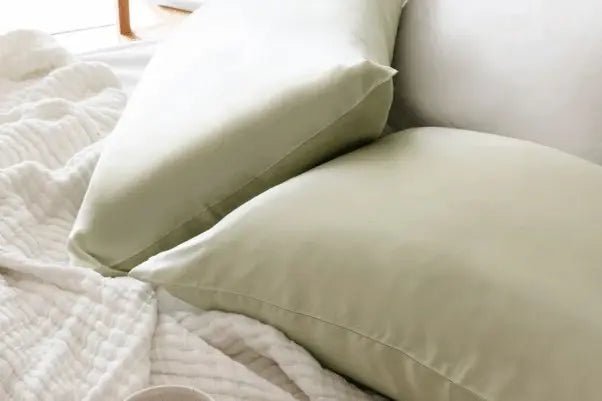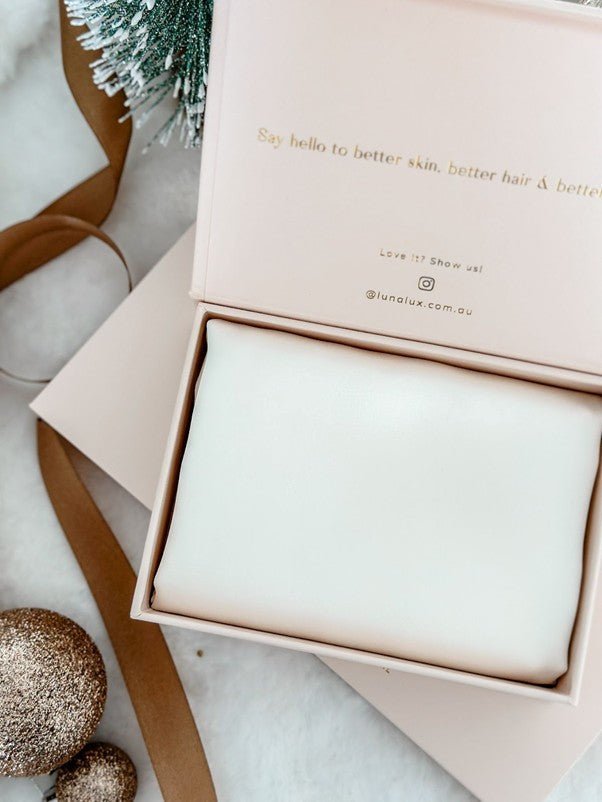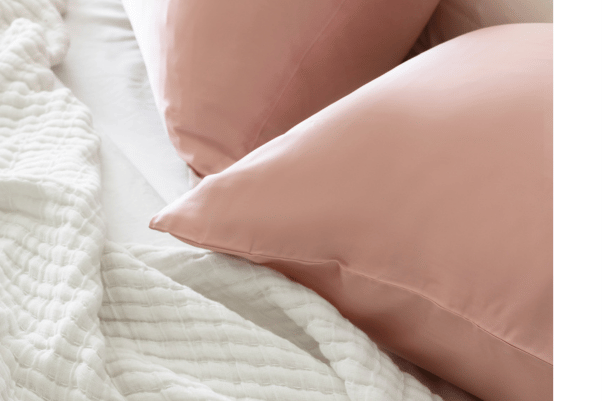Recognised all over the world as one of the best quality natural silks, mulberry silk is a natural fibre well renowned for its one-of-a-kind soft and luxurious texture and elegant aesthetic appeal. It first hit the market in China over a thousand years ago, where it was first produced. Today, it has become one of the most sought-after silk fabrics worldwide.
The material is earning top praise in the bedding and sleepwear industry, mostly used to manufacture bedding such as pillowcases and sheets, as well as sleepwear.
Its features, such as its unmatched suppleness, softness and breathability, make mulberry silk the perfect material for bedding and sleepwear. Furthermore, its unmatched style and enchanting appeal make it stand out as one of the most sought-after fabrics in many homes and the fashion industry.
Mulberry silk is rare and superior because of its vast difference from other natural silk fibres, with incomparable durability and quality.
However, the question often beckons, what is mulberry silk and why is it so popular?
What is Mulberry Silk?
Mulberry silk is a type of natural silk fabric that is made from cocoons spun by silkworms that feed exclusively on leaves from the mulberry tree. It is a fabric renowned for its soft luxurious texture, and numerous health benefits, especially for skin and hair.
Mulberry silk is considered one of the best choices in luxury and beneficial fabrics, especially for silk bedding.
Other Types of Natural Silk
Silk is a fabric with a soft and sheen texture that comes in a natural or synthetic option. However, for health benefits, it is always better to opt for silk garments made from natural fibres, rather than synthetic silk consisting mainly of processed polyester fibres. There are, however, a few different types of natural silk available, though mulberry silk is by far the most popular.
- Eri Silk - Eri silk is produced from cocoons spun by the Samia Racini or Samia Cynthia worm that feeds mainly on the castor plant. It has more of a cotton, wool-like texture and is commonly produced in North-east India and some parts of Japan.
- Muga Silk - produced by the semi-domesticated Antheraea Assemensis feeding on small plants it is a high-sheen, glossy fabric native to the Assam region in India.
- Tasar or Vasna Silk - Also known as Tassar wild silk, is produced by the Antherea Paphia that feeds on most food plants. It has a rougher, more uneven texture and is a wild Indian silk ranging in colours such as yellow and beige to brown.
- Mulberry Silk - Mostly produced in China and India, as well as 22 other countries globally, and is highly prized and coveted for its longer fibres and rich lustres, softness and evenness. It consists of silk spun by the Bombyx Mori (domesticated silkworm) that feeds mainly on mulberry leaves and makes up for around 70% of all silk produced.
Properties of Mulberry Silk
Mulberry has the longest and strongest fibres, which make it the most uniform silk fibres overall. A fabric consisting of mulberry silk has a natural sheen and a soft, silky, luxurious feel. It is well known for its high durability, breathability and hypoallergenic properties. Because mulberry silk has a natural protein fibre, it is also very similar to human hair and skin.
Mulberry Silk Production Process
As mentioned, domesticated silk worms that feed mainly on mulberry tree leaves produce mulberry silk.
The production process begins with the cultivation of the silkworms.
- The silkworms spin cocoons around themselves before going to metamorphose into moths.
- The cocoons are harvested and boiled to extract the silk fibres.
- The raw silk fibres are then taken, unwound, and cleaned.
- The cleaned long fibres are used to weave into woven fabric.
- The fabric is then coloured with dye or printed with different patterns.
This entire process is extremely labour-intensive, requiring optimal care to produce the best quality mulberry silk fabric.
The Benefits of Mulberry Silk
Mulberry silk is a highly durable, breathable and hypoallergenic natural fabric that holds multiple benefits, which is why it is such a popular choice.
- Breathability - The fabric is highly breathable, which is ideal for hair and skin.
- Friction Free - Because of its smooth and friction-free surface, mulberry silk prevents tangle and breakage in your hair, and it is also gentler on your sensitive skin.
- Moisture Retention - Mulberry fabric helps to retain moisture in your hair and skin because it does not drain moisture from your skin. It also helps your skin and hair to better absorb beauty products and serums.
- Reduces Wrinkles - Because of its soft texture, the full silk pillowcase reduces the chances of sleep wrinkles caused by your skin pressing against your pillow.
- Hypoallergenic - Mulberry silk is naturally hypoallergenic, which is ideal for individuals suffering from allergies. It is also dust mite, mould, and mildew resistant.
- Temperature Regulating - The silk naturally regulates temperatures, keeping you cool in summer and warm in winter.
- Durable - Mulberry silk is one of the most durable natural silk fabrics that is highly resistant to wear and tear with proper care.
Uses of Mulberry Silk
Mulberry silk is used to produce a soft silk satin fabric with a smooth and lustrous surface that is ideal for producing the following items:
- Luxury bedding such as sheets, pillowcases, duvet covers and blankets.
- Sleepwear.
- Eye masks.
- Hair caps and scrunchies.
- Luxury Clothing Items.
- Similarly, processing mulberry silk into a silk thread often gets used for sewing and embroidery.
How to Care for Mulberry Silk
Mulberry silk is a natural and luxurious fabric that requires proper care to retain its beauty. Because it is a delicate fabric, you must use a pH-balanced detergent that is mild for washing. Similarly, it is best to wash silk items by hand or on a gentle machine cycle.
Always avoid using bleach or harsh chemicals on your silk as it can damage the fibres. It is also important not to wash or dry silk at high temperatures, but rather to revert to line drying, or away from direct sunlight. You must never iron silk or expose it to very high temperatures. Is typically the best option.
Silk Production by Country
Regarding countries in which the mulberry silk and silk industry is the most predominant, China is a prominent producer of over 70% of the world's mulberry silk. Then, India is the second largest producer of silk, which is then followed by Uzbekistan and Thailand. However, the United States of America is also a significant producer of natural mulberry silk, with multiple silk farms located mostly in the state of California.
As a Final Thought:
Mulberry silk is unmatchable when it comes to luxury, softness and durability, which is why it is the most popular type of silk on the market today. Not to mention the various health benefits and beauty benefits which make it so sought after. It is a high-end silk textile that is used to produce many items for those looking for a comfortable, sustainable and healthy fabric choice that still boasts an enchanting aesthetic appeal.








